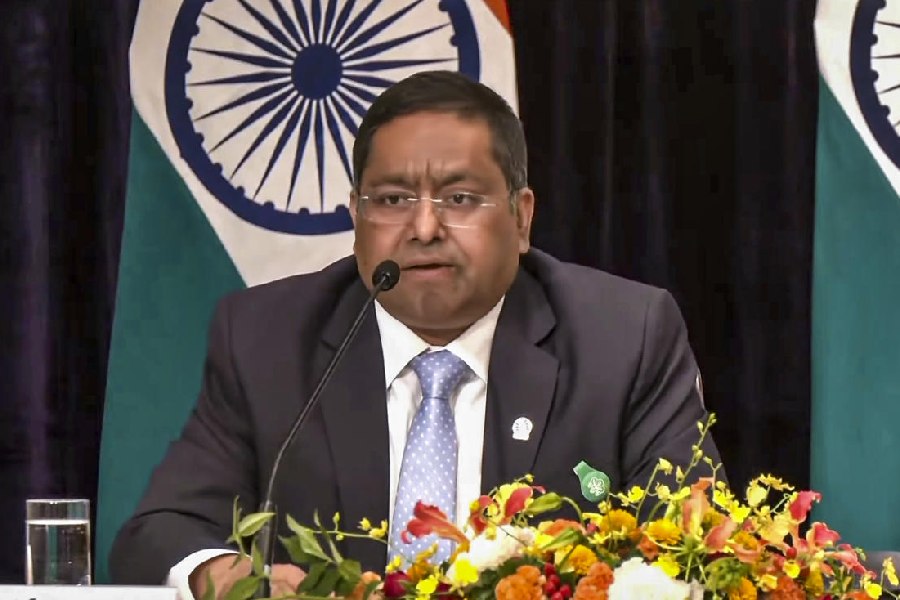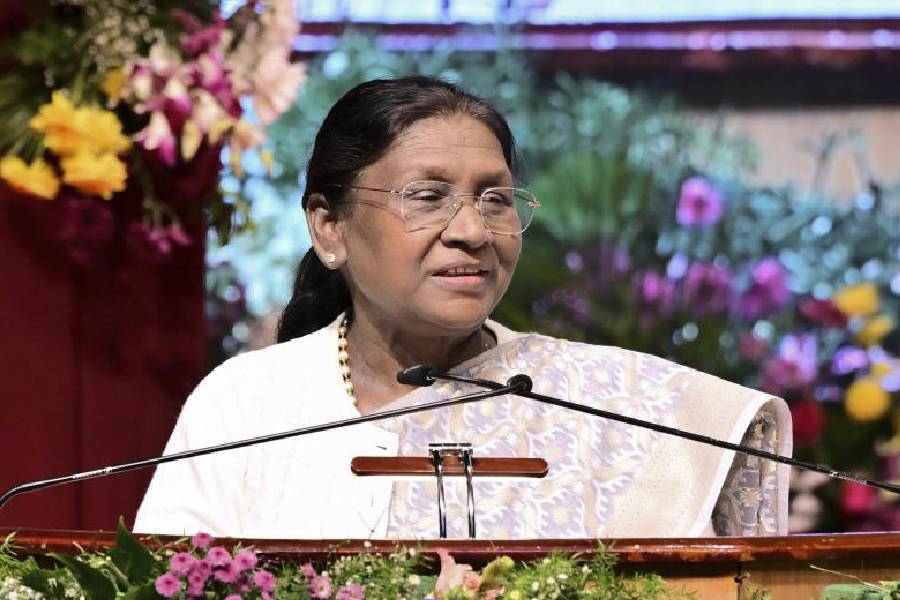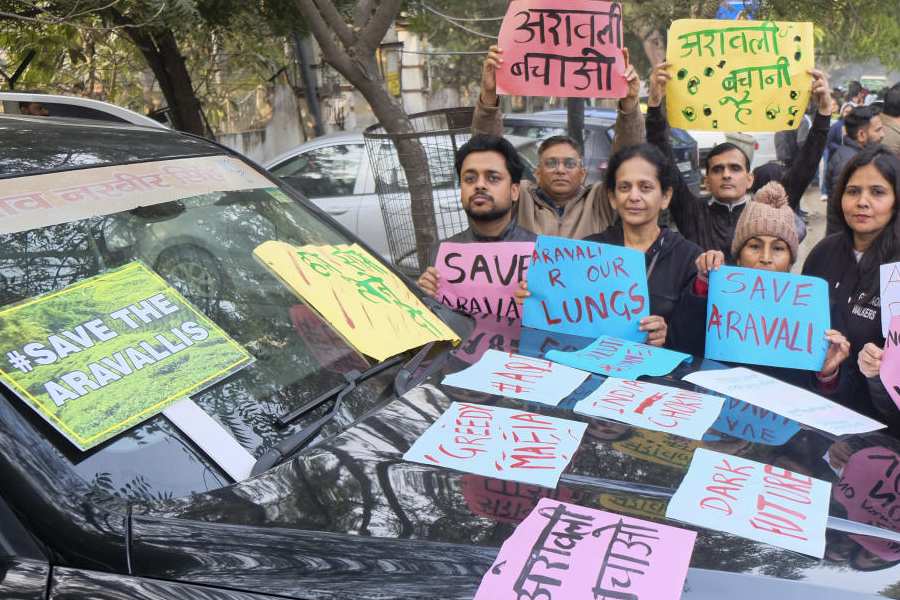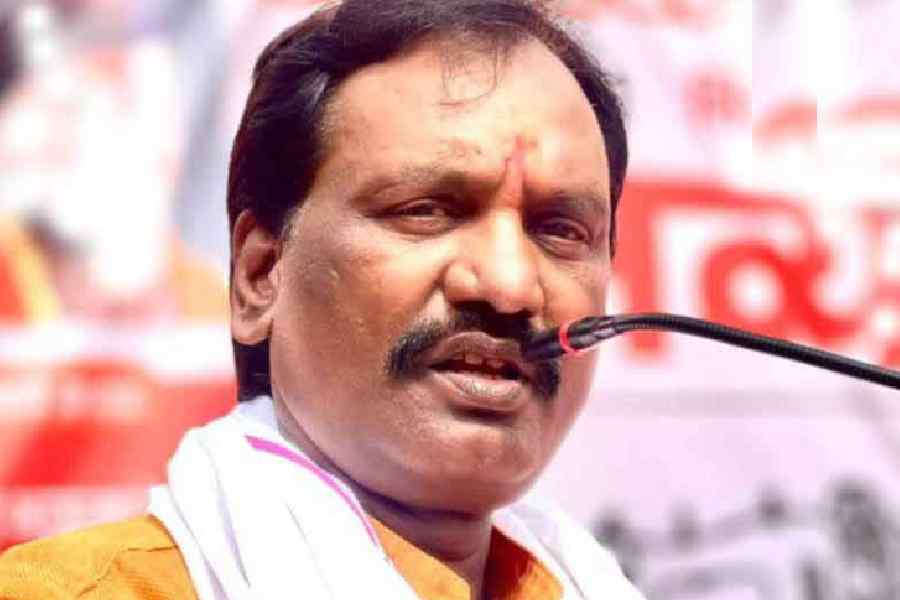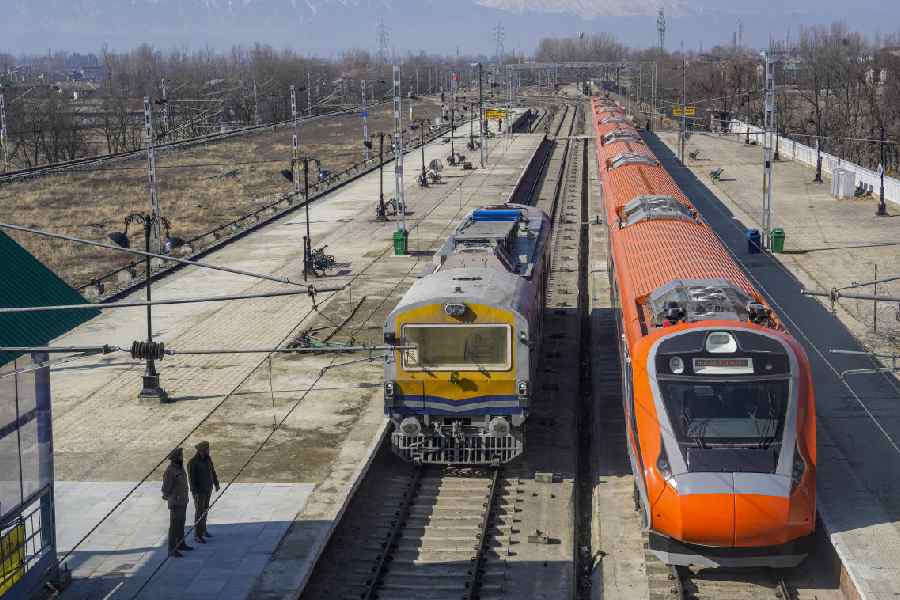 |
Chief minister Nitish Kumar seems to have gradually lost ground in the JD(U)’s key support base that might reflect in the elections next year.
Take the example of a middle-aged man in Nitish’s home district. “We belong to the Brahmarshi samaj (Bhumihar community); we are all for Narendra Modi,” said the man on November 2, while walking down the 5-km stretch from Sarmera to Ahiapur-Musahri where the BJP’s prime ministerial candidate was about to land in a few minutes.
He added: “In the 2005, 2009 and 2010 elections, we had voted for Nitish. But this time, we will vote against Nitish. He (Nitish) has backstabbed us. We will avenge it by voting in favour of Modi’s nominees.”
A survey of various sections of society reveals that upper caste voters, who account for 10 per cent of Bihar’s electorate and had backed Nitish’s rise to power in their quest to dislodge the Lalu-Rabri regime, have turned as “inimical” to Nitish as they had to Lalu throughout his rule.
There were obvious reasons why upper castes turned hostile to the Lalu-Rabri regime. By replacing the Congress in 1990, the RJD boss had effectively obliterated the protracted upper caste dominance under the Congress in the state. Having championed the Mandal Commission report, Lalu had emerged as a “messiah” for backward classes. The upper castes had little space in Lalu’s scheme of things. Moreover, Lalu’s plank helped him in the sense that his staunch advocacy of the Mandal Commission report polarised the backward classes, constituting 70 per cent of the state’s voters, against the upper castes.
But, what turned the upper castes against Nitish? After all, Nitish speaks the language of “conciliation” — contrary to that of “conflict” that Lalu did. Nitish talks about inclusive growth and promises “participation of all — Hindus, Muslims, men, women, weaker and upper sections”.
Sociologist Hetukar Jha said: “The voters tend to decipher that present-day leaders work more to promote their own political interests than that of the castes and communities to garner votes. Lalu worked against the upper castes’ interests. The upper caste voters played a role in replacing him with Nitish in the hope that he would guard their interests.”
On Jha’s interpretation, a political expert pointed out that Nitish had effectively “ditched” the cause of upper castes in a bid to consolidate his hold on the Extremely Backward Classes (EBCs) and Mahadalits who together constitute about 47 per cent of the state’s electorate.
The experts said the upper caste voters — “hell-bent” on dislodging Lalu — shifted their loyalty from the Congress to the BJP in the 1990s and subsequently sided with Nitish after the latter forged an alliance with the saffron party to get their space back in politics.
But the first thing that Nitish did after coming to power in 2005 was to reserve 16 per cent of local body seats for the EBCs. “Sociologically and politically, it was a right decision for it ensured empowerment of the social sections that were devoid of any say in governance for ages. But the move went a long way in dispossessing the upper castes from the power structure at the grassroots levels,” said one of the experts.
“They felt cheated. Over the years they were nursing a grouse against Nitish. Now, they have found an option in Modi. Despite having his roots in the OBC, Modi is the prime ministerial candidate of the BJP, which the upper castes are at home with,” Jha said.
Incidentally, Nitish is not getting the “consolidation” of the backward classes behind him the way Lalu got by pitting them against the upper castes. “It is because the upper castes and upper backward castes, including Yadavs, who constitute about 15 per cent of the state voters, have struck a common cause. By reserving 16 per cent of local body seats for the EBCs, Nitish dispossessed the Yadavs and other upper backward castes,” said a senior JD(U) leader.
A section of JD(U) insiders revealed that some powerful leaders from upper castes raising their voice against Nitish was “reflective” of the upper caste mood. For instance, agriculture minister Narendra Singh’s “outbursts” against Nitish at the party’s conclave at Rajgir on October 29 summed up the mood of the upper caste Rajputs.
The victory of the RJD nominee, Prabhunath Singh, from Maharajganj in May brought to the fore the emerging unity between the Yadavs and upper caste Rajputs who fought pitched battles against each other throughout the Lalu-Rabri regime.


